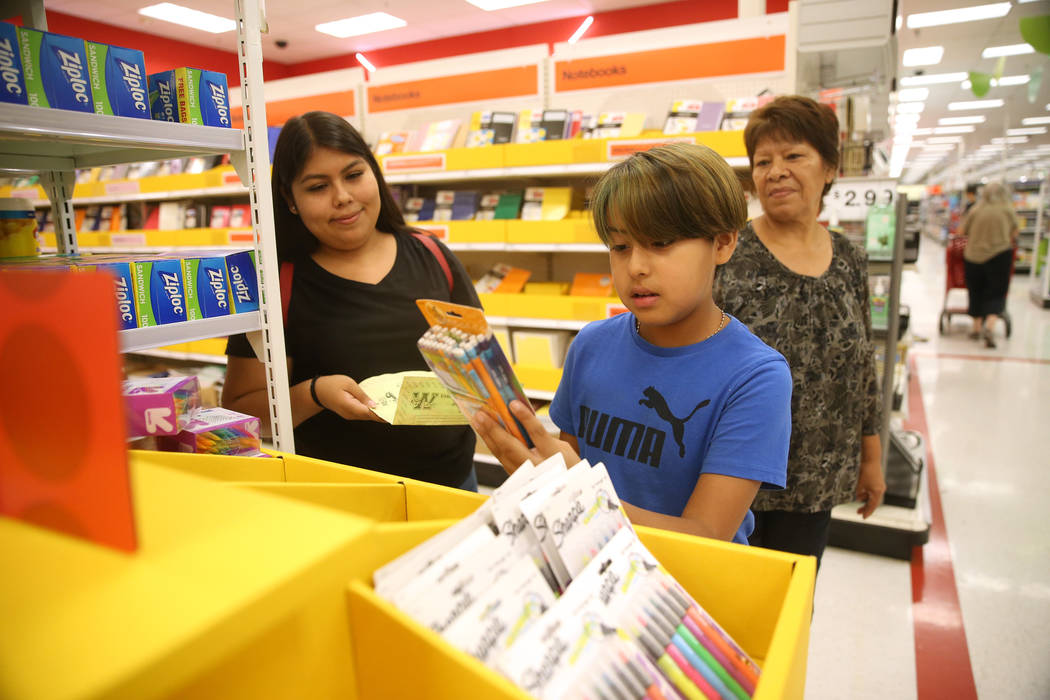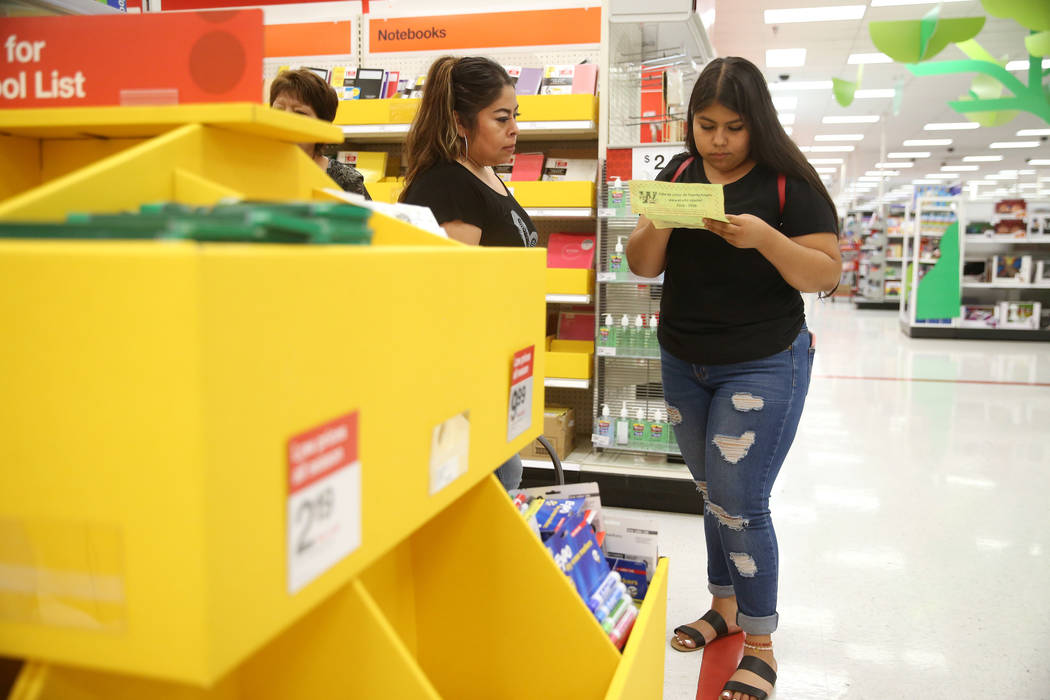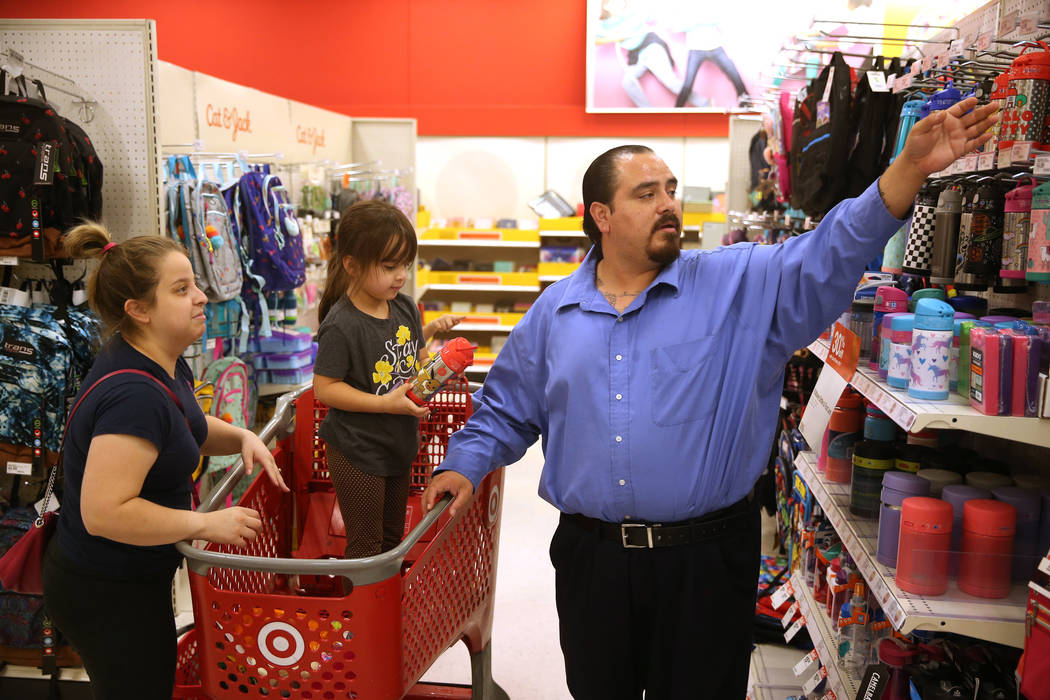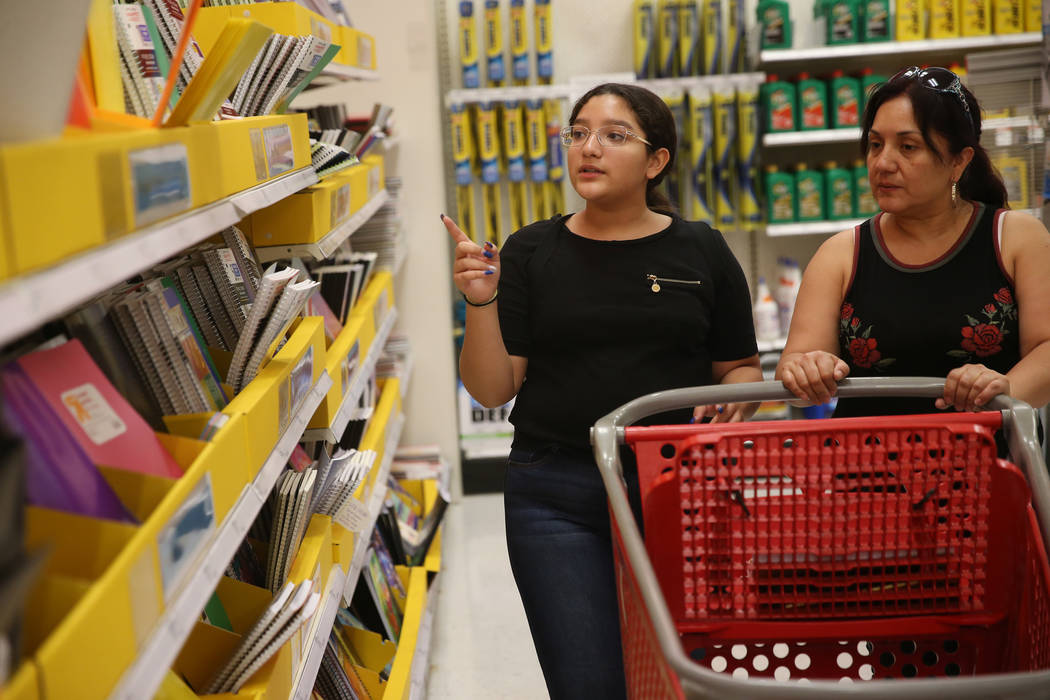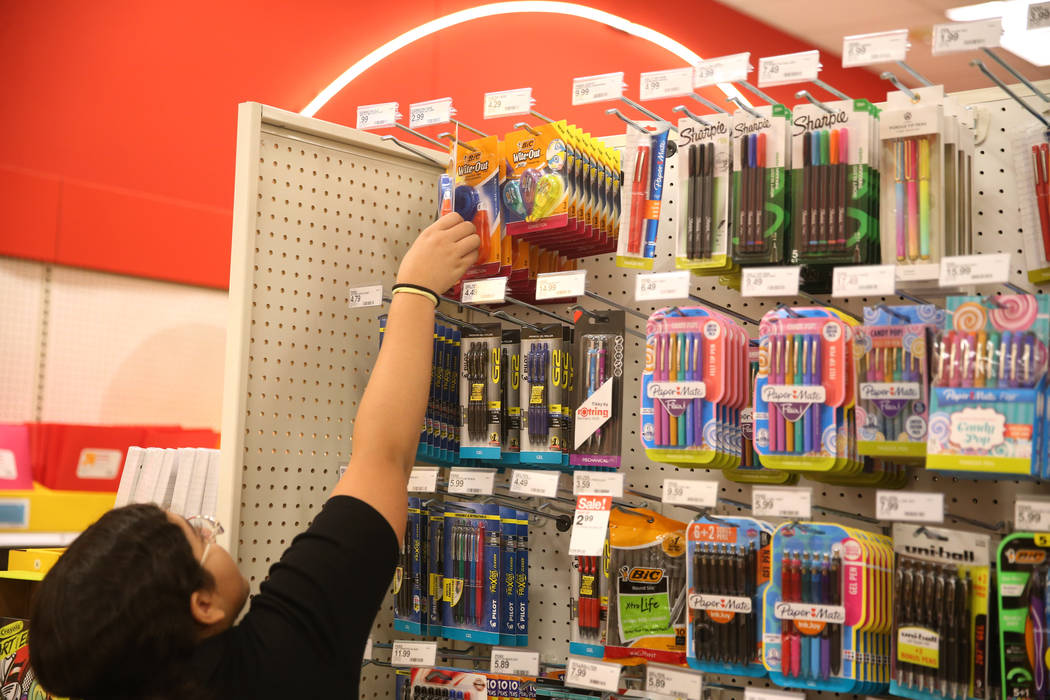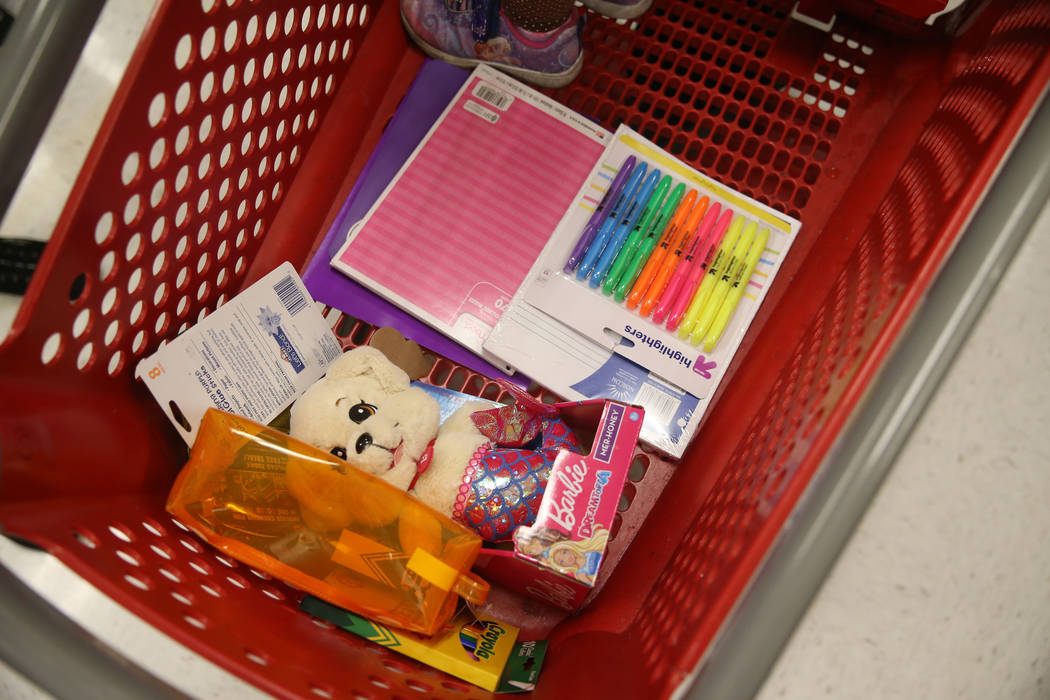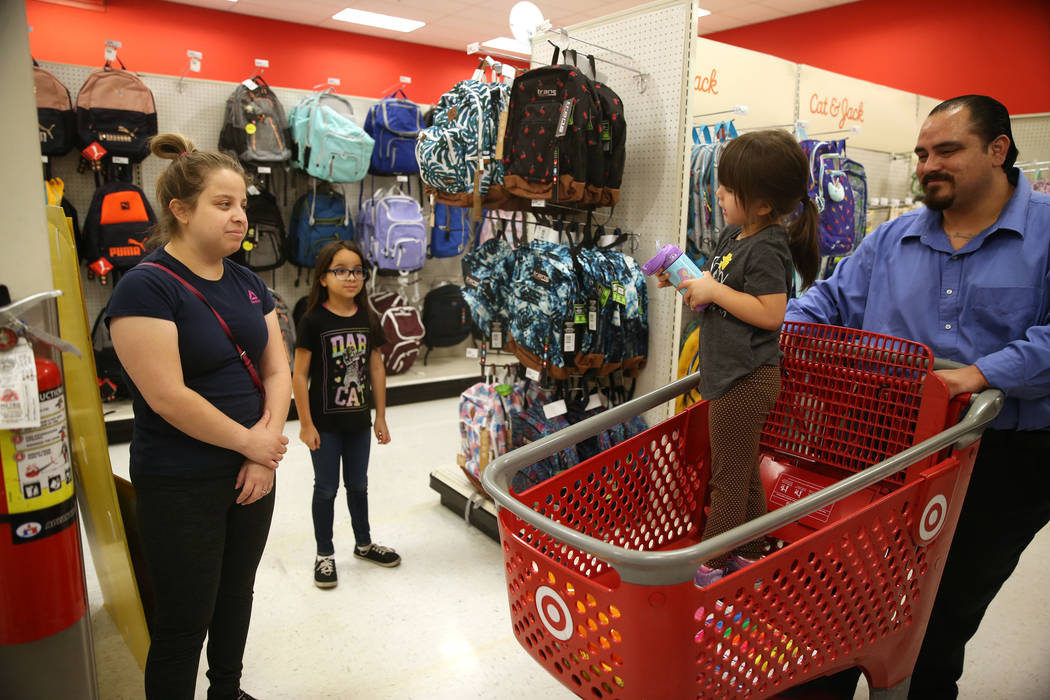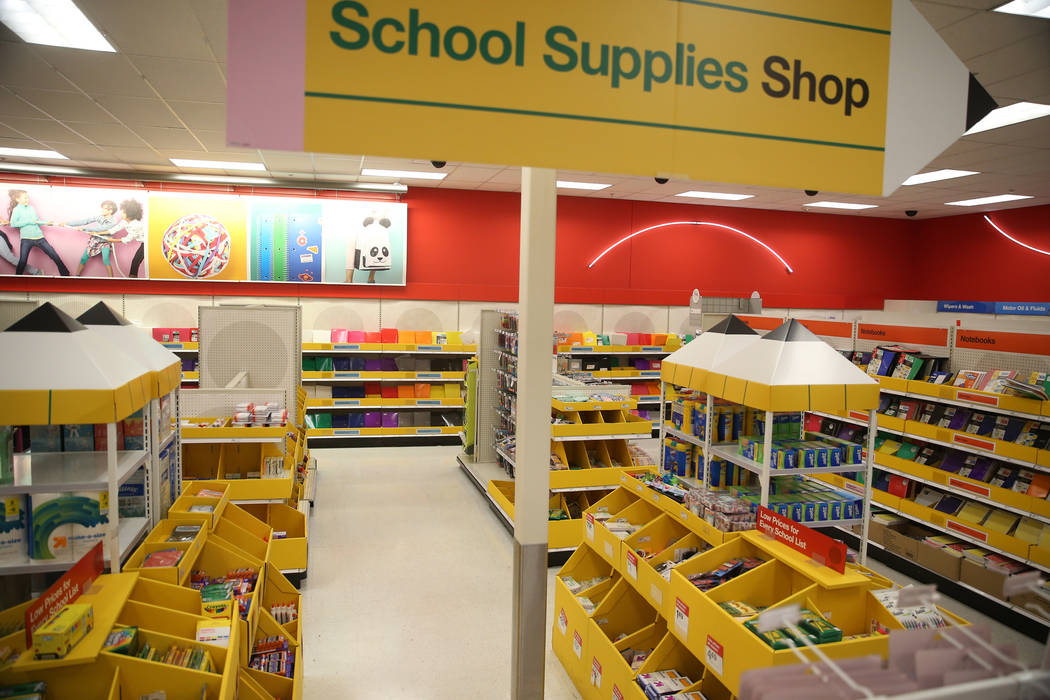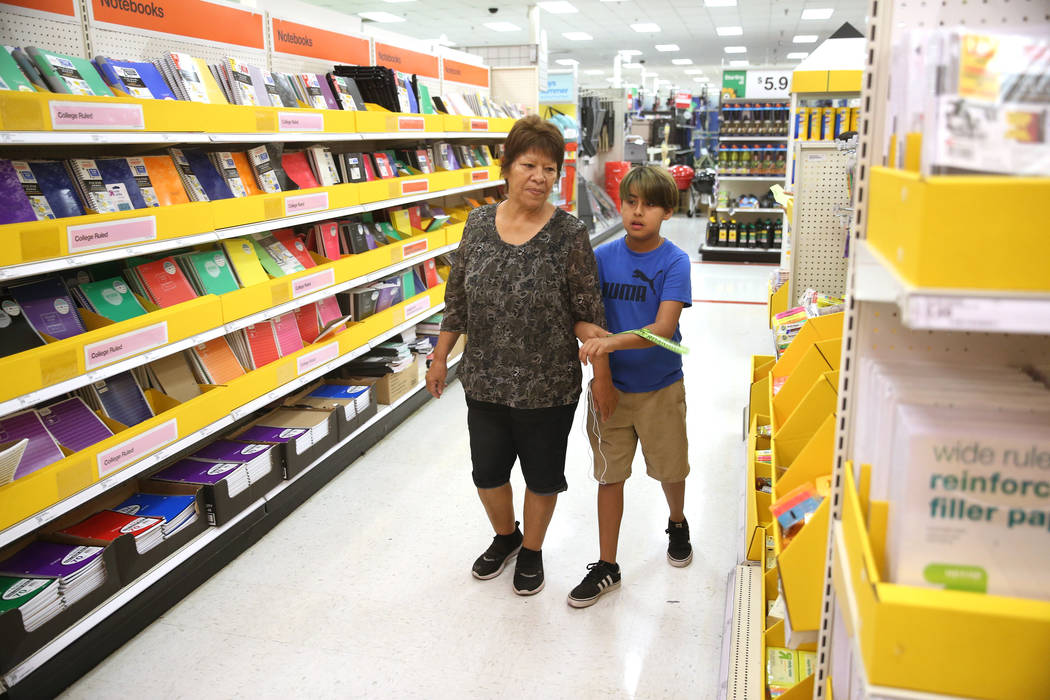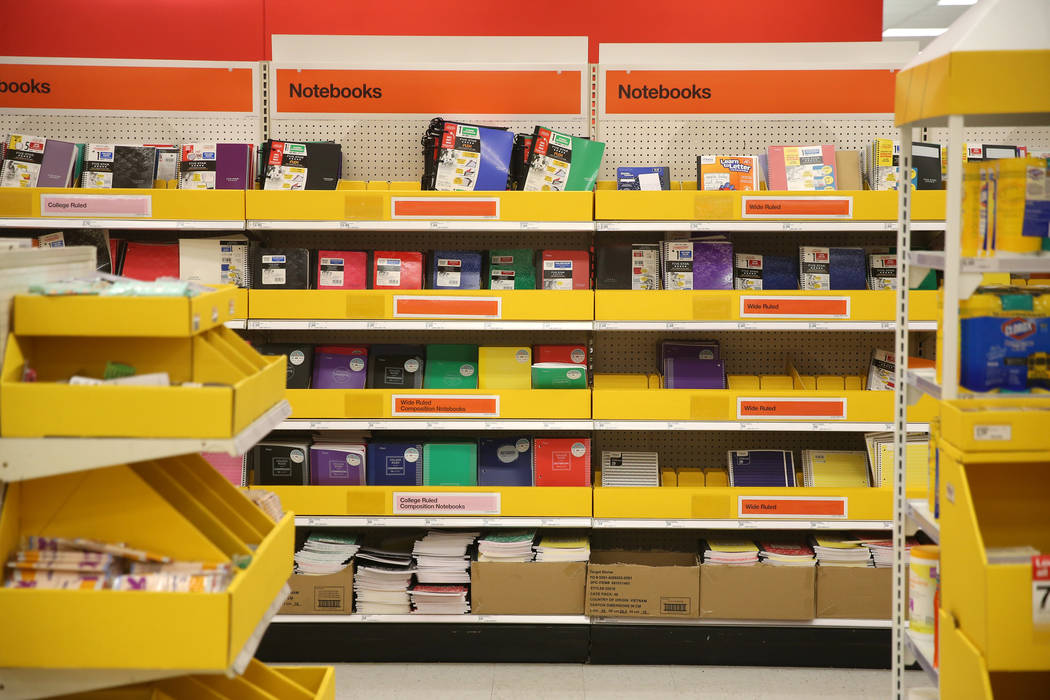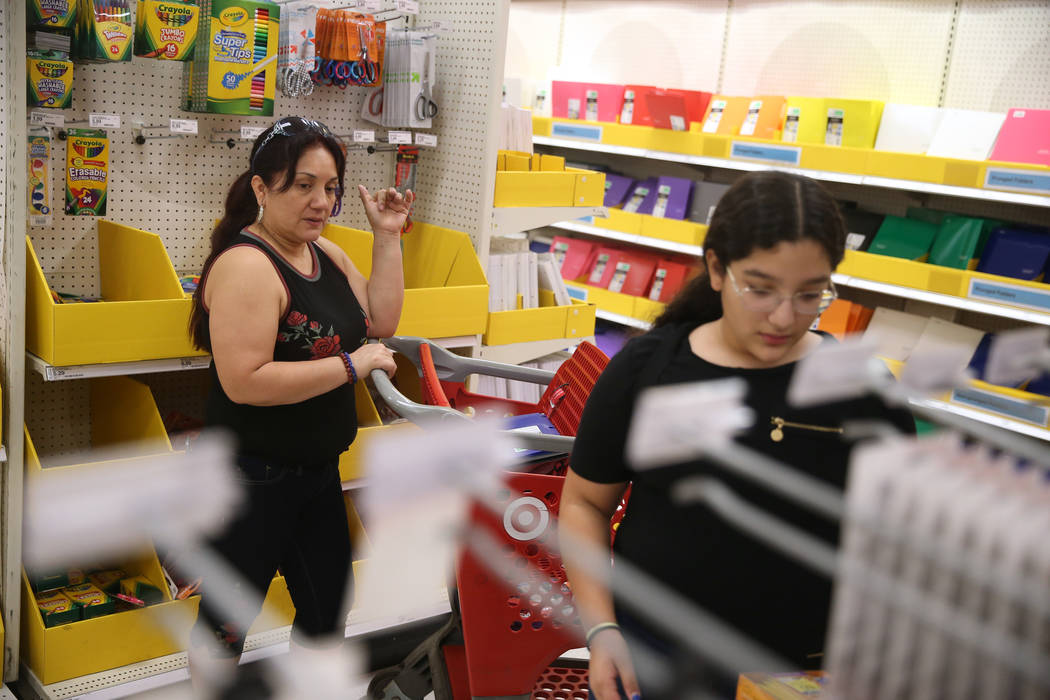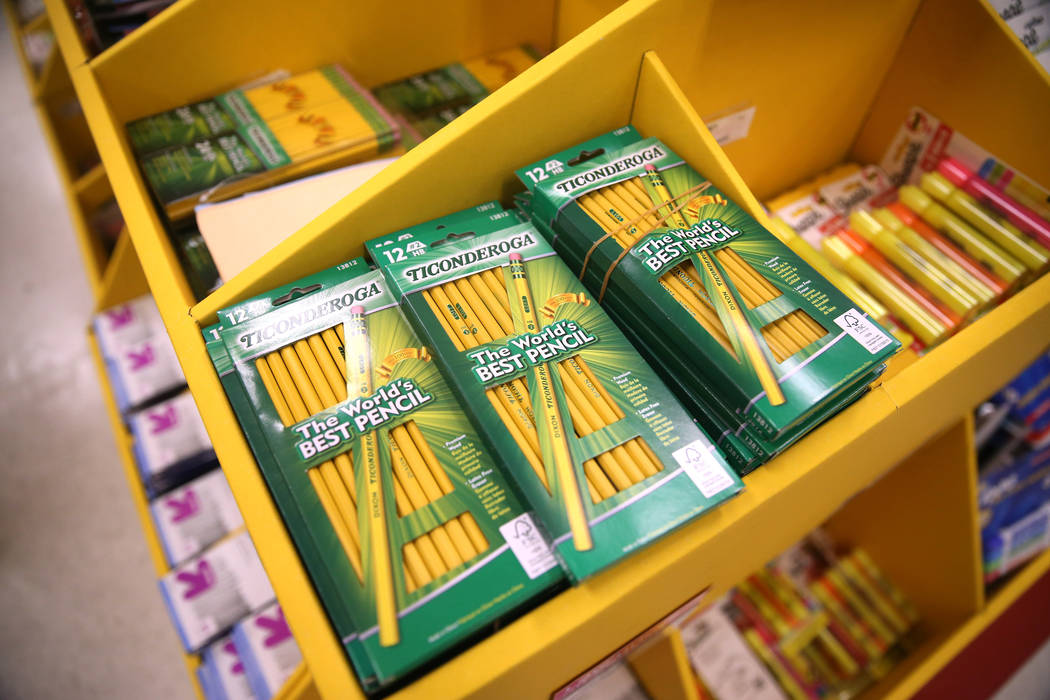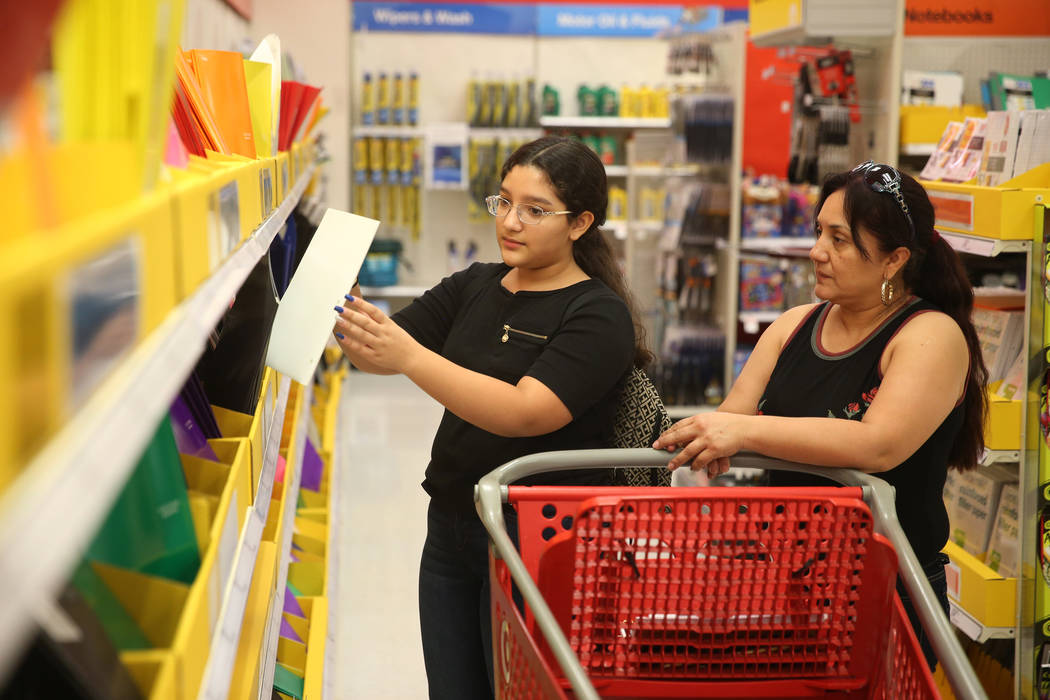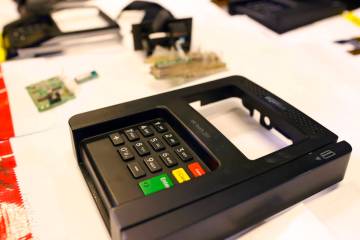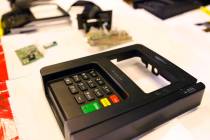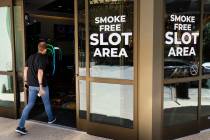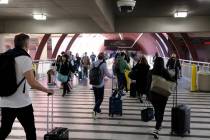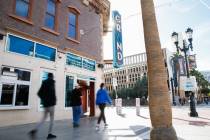Back to school shoppers expected to spend more than last year
Isabel Reyes watched her 17-year-old daughter, Melissa Ocampo, slowly walk through the aisles Thursday looking for school supplies at Target’s branded “Back to School” shopping section.
The mom of two said she’s spending more this year on school supplies, pointing to her daughter as the culprit.
“We’re spending more because it’s my senior year,” said Ocampo, who attends East Career Technical Academy.
Families with children in grades K-12 are expected to spend a record amount this season.
A survey of 7,660 consumers by the National Retail Federation found families are expected to spend an average of $696.70, up about 2 percent from a year ago. The figure beats the record of $688.62 set in 2012.
Mark Mathews, NRF’s vice president of research development and industry analysis, admits he was initially unsure about the results.
“I was feeling a little bit of trepidation about where we were going to end up — there was a lot of talk about tariffs, at the time the stock market was a little bit volatile,” he said. “For the numbers to come out so positive, it shouldn’t have been surprising because frankly it’s indicative of strong underlying fundamentals underpinning U.S. consumer finances. We’ve got elevated consumer sentiment, low inflation, wage and job gain so the consumer is in great shape.”
$26.2B nationwide spending
Total spending for K-12 schools is projected to reach $26.2 billion, down from last year’s $27.5 billion. The survey credited fewer families with children in grades K-12 for the dip, but Mathews said it likely stems from the sample size as opposed to potential trends in population growth.
The top three spending categories for families with children between K-12 was clothing and accessories with an average spend of $239.82 followed by electronics at $203.44 and about $135.96 spent on shoes.
Mathews said the most interesting part of the survey was the number of preteens and teens opting to spend their own money on school supplies, adding that he wouldn’t mind if his own 12-year-old son pitched in to help with a smartphone expense.
Combined, preteens and teens are expected to spend $63.11, double the amount from 10 years ago.
“That works out to $1.5 billion overall so it’s not an insignificant contribution,” he said.
2nd biggest retail sales time
Back to school season is the second biggest spending season of the year next to Christmas. But unlike the holidays, there’s a bit less discretionary spending — at least that’s the case for Jose Rodriguez. He has two daughters, Karen, 9, and Mia, 4.
“I always try to get them exactly what they need, and we’re always under budget,” he said. “We’re not trying to overspend, but at the same time we are trying to get what they need for school. They go through (pencils). You’d be surprised, especially with these kids, and the crayons with the little one.”
Luckily, Rodriquez said he and his wife, Yessenia Rivas, finished purchasing school clothes two weeks ago.
If they buy their clothes earlier, he said by the time school starts “they’ll have holes in their knees and their shoes will be messed up.”
Much like the shoppers surveyed separately by Deloitte, Rodriguez did all of his shopping in-store.
The professional services firm, which surveyed 1,200 parents who have at least one child attending grades K-12 this fall, found households plan to spend 56 percent of their budget in-store and 29 percent online with the remaining 15 percent “up for grabs” with undecided shoppers.
Rod Sides, vice chairman of retail and distribution at Deloitte, said shopping in-store is about convenience, particularly if kids are growing from season to season and need new clothes.
Mass merchants top spot
The number one retail destination for families remained mass merchants such as Target and Walmart with 88 percent planning to visit.
Deloitte projected total back to school spending to reach $27.8 billion, up slightly by 1.8 percent from a year ago, differing from the results reported by the National Retail Federation.
Sides acknowledged various back-to-school surveys will often have different results but said every retailer should focus on keeping merchandise in stock.
“The back to school season changes geographically. The northeast, for example, usually doesn’t go back until after Labor Day and many schools in the South have already started,” he said. “We find people who start back to school shopping early spend more money, but the people who start in the last two weeks blow that out of the water.”
Contact Subrina Hudson at shudson@reviewjournal.com or 702-383-0340. Follow @SubrinaH on Twitter.



